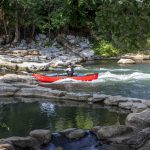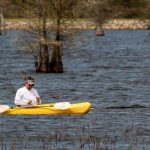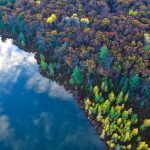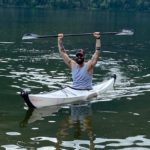Indiana is home to some of the best kayaking spots in the US. We’ve compiled a list of the best places for kayaking in the Hoosier State.
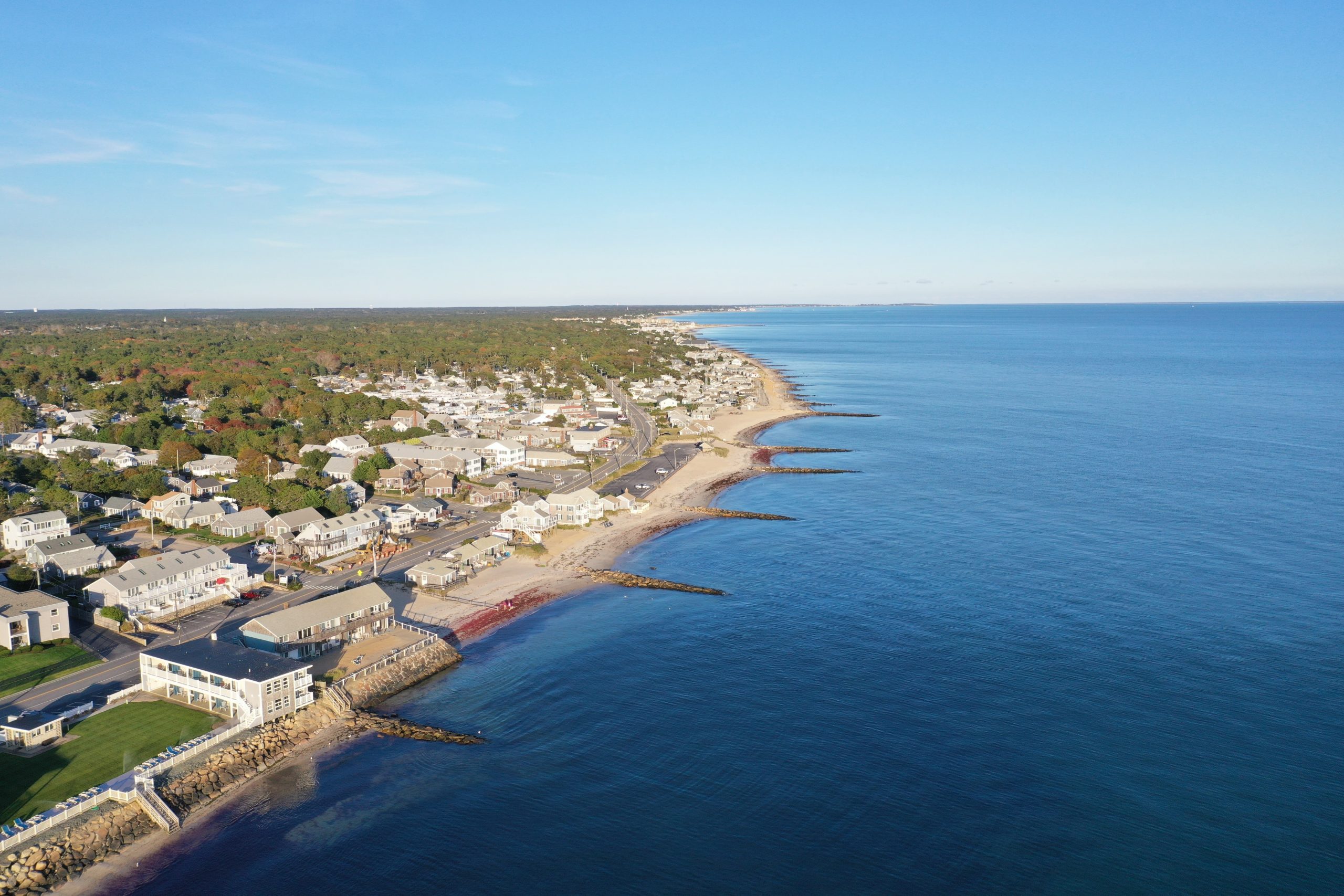
Massachusetts: home to Boston, Nantucket, Cape Cod, even the very Plymouth Rock where the Pilgrims first landed when coming to America.
And, not surprisingly, some of the best kayaking in the country!
Not only does Massachusetts offer truly gorgeous lakes and rivers, but because of its place along the New England coastline, you’ve got access to oceans, bays, and inlets where you can test your paddling skills.
Below, we’ve assembled a list of the best places to go kayaking in Massachusetts, along with resources to help you plan your next trip.
Read everything this page has to offer, and I guarantee you’ll enjoy your visit to all of Massachusetts’ best kayaking spots so much more.
15 Best Places to Go Kayaking in Massachusetts
1. Great Island Trail
For those who want to tackle some ocean waters, the Great Island Trail is a truly spectacular trip to take. The trail starts from Bass River, paddles downstream onto the ocean, and wends its way around the gorgeous Cape Cod. There, you can see some of the oldest and best-known historic sites in the state, along with a lovely wildlife refuge filled with animals. It’s a truly unique experience that you’ll find nowhere else in the country.
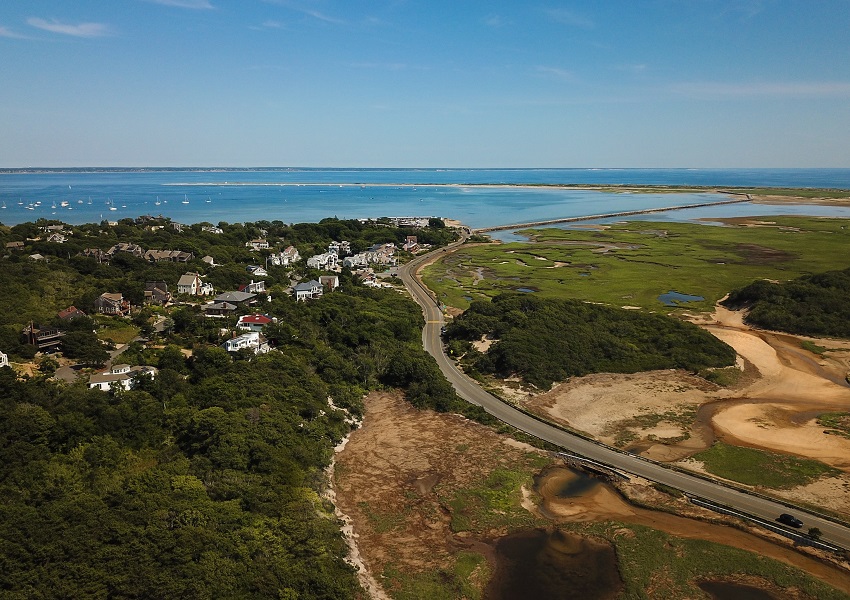
Fair warning: the ocean kayaking will be a bit rougher than expected, so make sure you’re skilled and prepared enough for the challenge. There will be choppy waves most of the year-round, and the Atlantic is far from a kind ocean, with strong tides and currents. Beginners should steer clear, but intermediate and expert-level sea kayakers will love the Great Island Trail.
2. Boston Harbor Islands
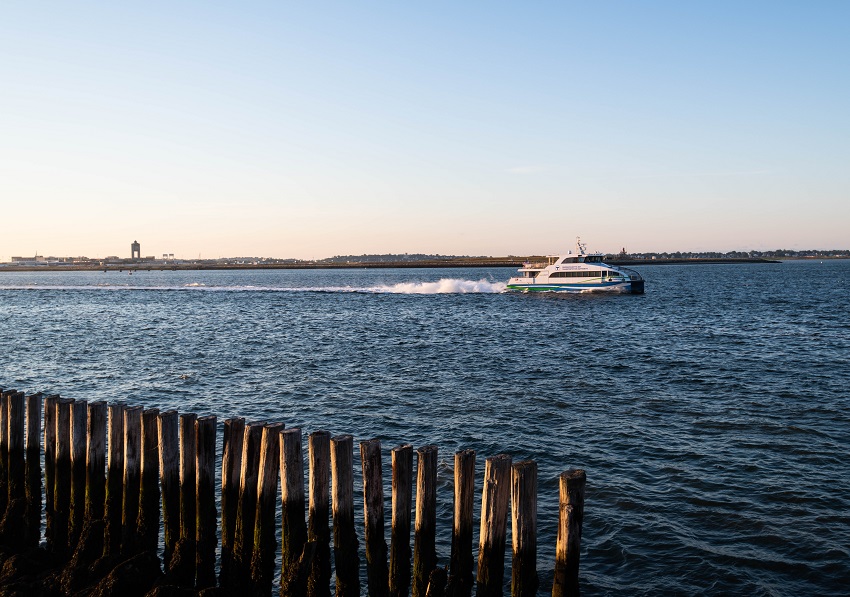
The Boston Harbor is where the historic “Boston Tea Party” took place, and you’ll love paddling around the old port to see the location for yourself. But you can also head out to sea to explore the gorgeous Spectacle Island, as well as Hingham Bay and Quincy, all of which offer excellent challenges for sea kayakers and some truly gorgeous views of the city itself.
Boston is one of the most unique and fascinating cities in the country, and the kayaking trip to the Boston Harbor Islands lets you see it from a new perspective—from the water. It will give you a new appreciation for the city for sure!
3. Plum Island

Located just a short drive (under an hour) from the city of Boston, Plum Island is the perfect place to go for a day trip when you’re short on time but still want to fit in some paddling on your business trip. The kayaking trail around the island stretches for 19 miles, and lets you navigate through both open seas and marshy lands, giving you a challenge that will test your paddling skills.
There are countless launch points along the coastline, and plenty of places to put in to take a break when you need a rest. It’s worth considering kayaking in the company of an experienced tour guide who can point out all the best views and hidden secrets known only to locals.
4. Charles River Reservation
For those who want to experience some of Massachusetts’ best wildlife and natural beauty, the Charles River Reservation is a great place to spend the day paddling. Stretching for 20 miles along the Charles River, this reservation is home to wildlife, gorgeous natural beauty, and spectacular views. Best of all, the reservation is carefully maintained and kept pristine so you can bask in the beauty of nature far away from the hustle and bustle of city life.
In addition to the river kayaking, you can also camp, hike, boat, cycle, and let your kids run around the many playgrounds. There are plenty of spots to put in as well as rent equipment, so you’ll never have trouble getting out on the water even if you’re visiting from far away.
5. Ashland Reservoir
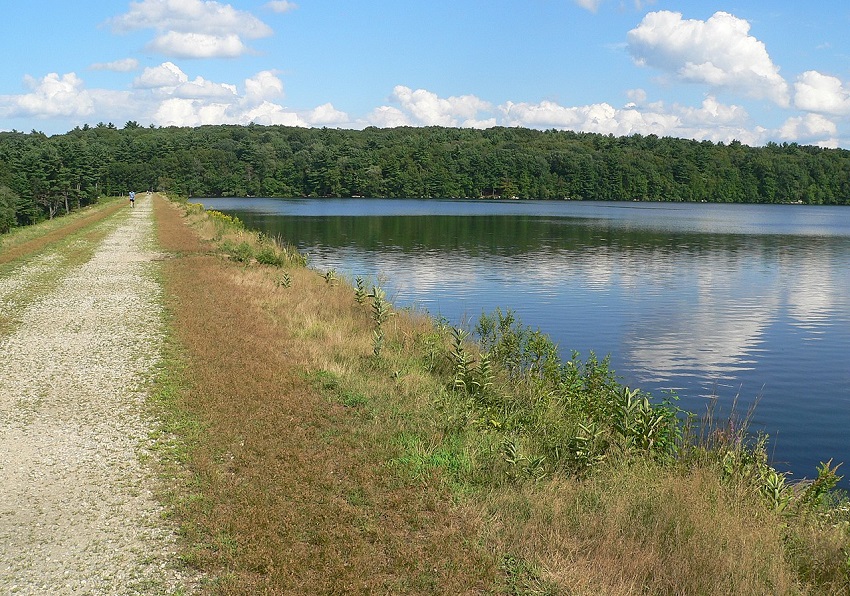
Located in Ashland State Park, the Ashland Reservoir is a beautifully easy, beginner-friendly paddling spot that you can enjoy without being crowded by too many kayakers and boaters. In fact, the waters are surprisingly peaceful, and you’ll find they’re calm enough that even young kids and newbie kayakers will have no trouble handling them.
The lands surrounding the reservoir are largely undeveloped, which gives it the feel of paddling in the “wild” despite being just a short drive from the city of Boston. You’ll love every minute you spend out on the water enjoying the gorgeous views of nature bordering the calm lake’s shores.
6. Fort River
If you’re looking for a more challenging paddling trip, give Fort River a try! The river is filled with fallen trees, submerged logs, rocks, boulders, and a plethora of other obstacles that will put your paddling skills to the test. Plus, the fast current will have you racing downstream at a breathtaking clip, so make sure to bring your A-game and stay sharp when watching out for hazards.
Fair warning: this river is only accessible to kayaks during “high waters”—when the water levels are too low, it’s virtually unnavigable and significantly more dangerous. It’s a springtime-only challenge that you will love, and it offers some of the most eye-wateringly beautiful scenery that will enchant your mind while the river tests your body.
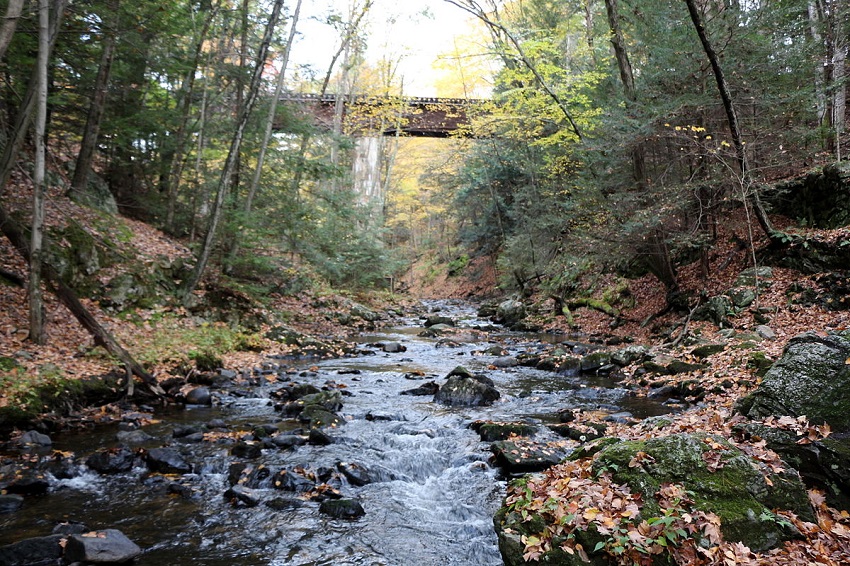
7. Concord River
If you’re a kayaker and a history buff, you’ll love spending a day or two paddling down the Concord River. Not only are there multiple launch sites—in cities like Concord, Bedford, and Billerica—but the river meanders through some beautiful historic sites where you can see the remnants of American history still standing for your viewing pleasure.
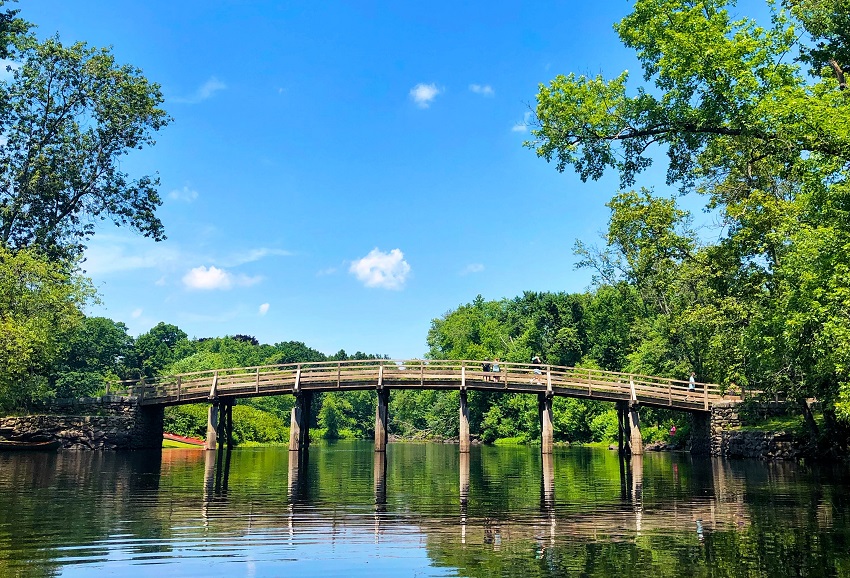
The river also passes through a number of wildlife habitats where you can see a variety of birds, fish, and land animals, along with both wetlands and woodlands. It’s incredibly varied terrain that offers wonderful views and plenty of photo opportunities. Guaranteed to be a one-of-a-kind kayaking trip!
8. Tully Lake
Tully Lake is a man-made reservoir that spans a whopping 1300 acres, so you’ve got plenty of water to explore over a weekend! It’s one of the most popular kayaking spots in Western Massachusetts, home to gorgeous pine tree-dotted islands, wild animals galore, and beaches where you can swim, paddleboard, camp, and play.
The entire shoreline can serve as a launch or put-in point, and there are countless spots where you can get out of your kayak to enjoy a relaxing lunch or grab a quick nap. The water will be largely peaceful for most of the year, though be warned that the wind can whip up the lake and make for some tricky cross-currents. Better to paddle on a calm, sunny day when the water is tranquil and the skies are clear.
9. Buffumville Lake Loop
This lake makes for both a relaxing day on the water and a challenge for your paddling skills. There are many spots where the lake grows shallow, forcing you to keep an eye on the water to stay on course, and you’ll find the occasional challenge in the form of underwater logs, fallen trees, boulders, or submerged rock formations you’ll have to navigate around. Beginners looking to test their kayak-handling abilities will love spending the day here.
The lake is beautifully well-developed with all the facilities you’ll need, and the local park rangers are a wealth of information to help you stay safe and make the most of your paddling trip. It’s worth doing a few circuits around the 500-acre lake over a weekend to really enjoy everything it has to offer.
10. Deerfield River
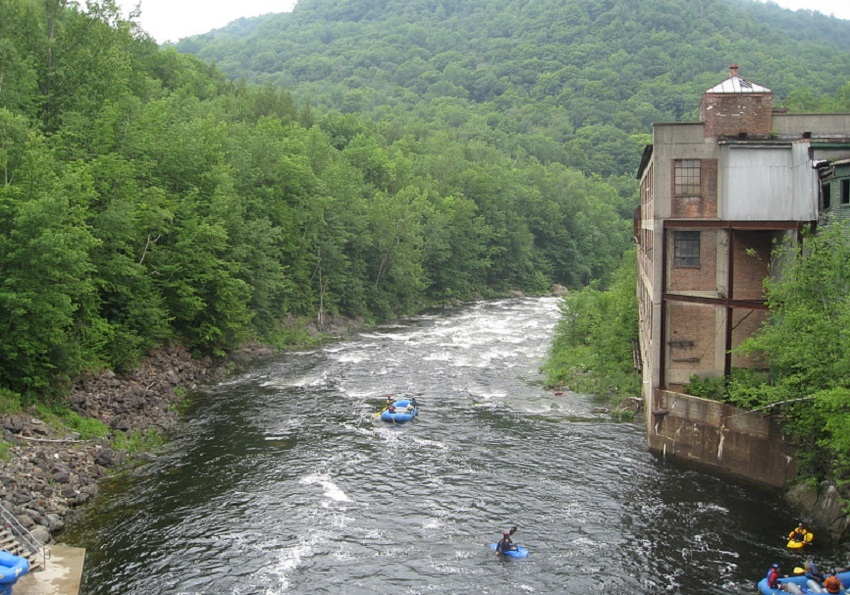
Deerfield River is home to some of the state’s best (and only) rapids. Ranging between Class I and Class III, there will be challenges aplenty to put your paddling skills to the test. Beginners will find these rapids are a great place to dip their paddles, but intermediate and expert-level whitewater kayakers can still push themselves on some of the tougher runs.
Along the way, you’ll have plenty of chances to spot the local wildlife, which includes blue herons and the iconic bald eagle. The river runs through miles of towering forests and unmarred shorelines. It will be a true nature adventure that you can’t help but love!
11. Swift River
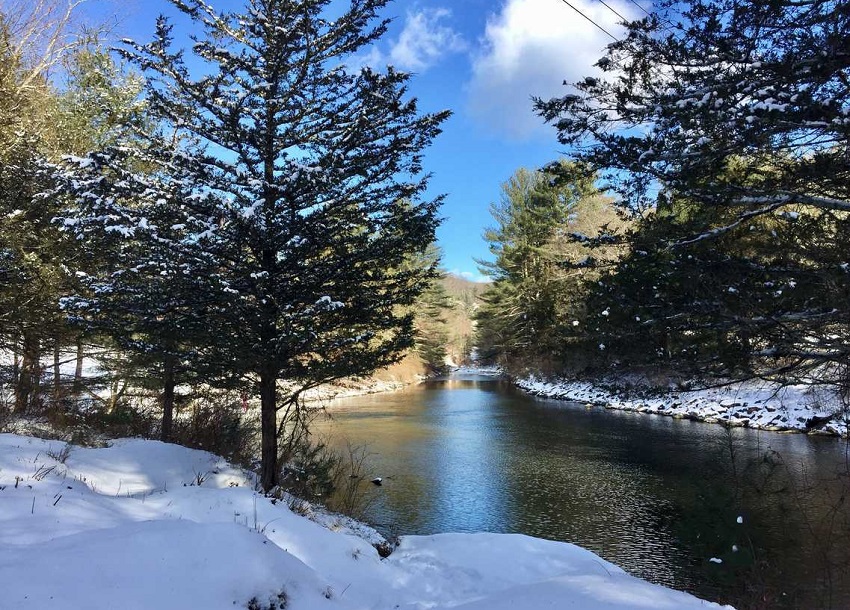
Anglers, this is the destination for you! Just a short drive from Belchertown, Switch River is home to a wide range of endemic species, among them the ultra-tasty trout. You can easily spend an entire week drifting along the river, anchoring in hidden coves, and paddling toward pools where the fish are biting. It’s always a good idea to go fishing with a local who can point you to all the best spots to cast out your line.
RELATED: Best Fishing Kayaks: Reviews and Ultimate Buying Guide
The current is low enough that you can paddle upstream as well as downstream, and there’s plenty of wildlife and rustic-looking towns in both directions that you’ll enjoy every minute you spend exploring the river. Make sure to head far enough downstream to explore the marshlands you’ll come across right before hitting the Bondsville dam. That’s guaranteed to be a fun way to spend an afternoon!
12. Barton Cove
Barton Cove is a man-made reservoir created by the Great Falls Dam, fed year-round by the Connecticut River. The waters are largely calm, making for great summer and autumn paddling trips. However, immediately following heavy rains, you can expect the waters to be a bit choppy, and storms and heavy winds will make it a more challenging paddle.
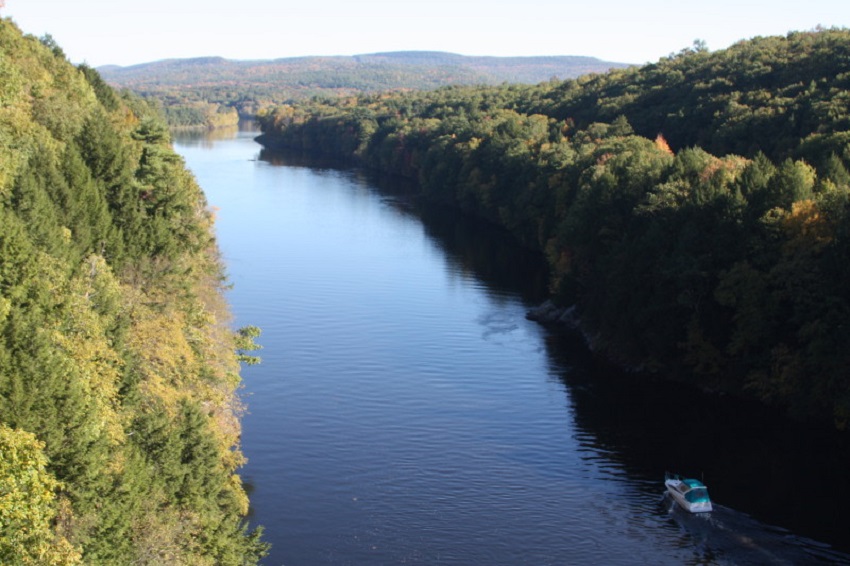
Kayakers from around the state (and New England) flock to Barton Cove during the peak paddling months to enjoy the calm waters, as well as the myriad wildlife you can see around the reservoir, including adorable otters. Bird watchers, in particular, love making the trip out to Barton Cove in the hopes of spotting mute swans and bald eagles.
13. Nashua River and Oxbow Trail Loop
Paddle through the heart of a wildlife reserve, where you can see bald eagles, blue herons, snapping turtles, painted turtles, a broad spectrum of fish (not for fishing, sadly!), and so much more. The river kayaking offers both calm, easy navigable sections and a few places where the water runs through Class I rapids. Beginners will find it’s a perfect test of their skills without being too difficult for too long.
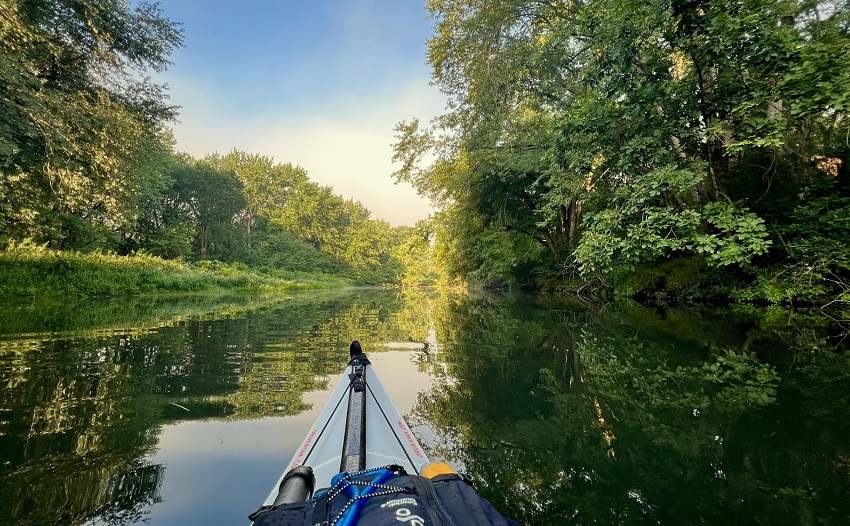
If you’re paddling the river and trail, make sure to pack a picnic lunch. There are plenty of spots along the way where you can put in and take your ease beside the river, enjoying the bright sun, warm weather, and beauty of nature surrounding you.
14. Westport River
The Westport River runs straight through the town of Westport, and you’ll love everything this paddling tour has to offer! Both the east and west branches of the river converge in Westport to create a broader, faster-flowing waterway that carries you downstream toward the ocean at Buzzard’s Bay. Along the way, you’ll pass around myriad islands where you can stop to take a break or explore the beautiful wildlife that makes their home in the area.
The beauty of this dual-branching river is that you can choose the route that best matches your paddling skills. The west branch is smaller and easier to paddle, while the east branch runs for longer (11 miles) and flows faster. Beginners and intermediate-level kayakers will find plenty to keep them entertained when out on these waterways.
15. Ipswich River

Stretching for 45 miles from Burlington to Ipswich, the Ipswich River takes you on a watery tour of some of Massachusetts’ most beautiful rural communities and small towns. You’ll get to see the sights of Reading, North Reading, Wilmington, Topsfield, Hamilton, and more as you journey downstream to Ipswich—and from there, into the gorgeous Great Marsh.
The river is largely calm and beginner-friendly year-around, though be aware that the water levels can rise (sometimes dangerously) following heavy rains. However, as long as you’re paddling during the “safer” months (typically summer and autumn), you’ll find plenty of safe, navigable routes downriver, with mile after mile of gorgeous scenery and views of wildlife.
Kayaking Tours in Massachusetts
As you’ve seen above, Massachusetts is home to some truly spectacular kayaking destinations, from rivers and rapids to bays and beaches. Whether you want to enjoy a relaxing trip around one of the calm reservoirs, explore a faster-flowing river, tackle the state’s only rapids, or head out to sea for some ocean kayaking, there are plenty of options to choose from!
Experienced kayakers will typically paddle on their own, but for those who aren’t yet experts, I always recommend connecting with tours and tour guides to make the most of your trips in unfamiliar waters.
You see, there are times of year when the rainfall will be heavy enough to turn even a calm lake or river into a more dangerous waterway. If you’re not aware of the risks, you might venture out on a trip unprepared for the hazards along the way.
Anglers will be better-served kayaking with someone who knows the waterways, and who’s savvy to all the best fishing spots and hidden pools. Your chances of catching something will increase when you’ve got a local angler to accompany you.
As for whitewater kayakers, it’s always smart to tackle rapids with an expert (or three), preferably one familiar with the specific challenges and dangers you’ll be facing as you race along downstream.
Plus, with a tour guide or tour company, you have access to quality, well-maintained gear—a great option if you’re traveling in Massachusetts but can’t bring your own kayak with you.
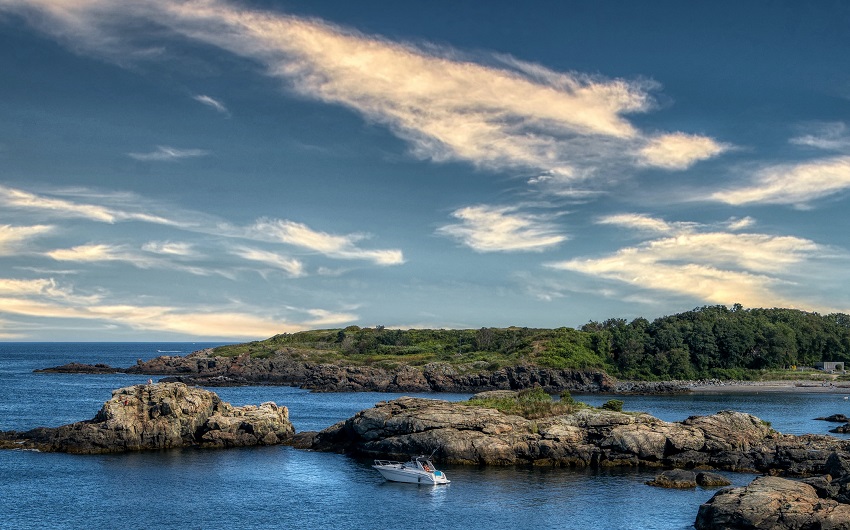
Here is a list of some of the most popular, best-rated kayaking tours in Massachusetts to consider:
- Cape Marsh Kayaking (tours of the Great Marsh and Cape Cod Bay)
- Plum Island Kayaking (tours of Plum Island, the Merrimack River, Indian River, and more)
- Nashoba Paddler (tours of the Nashua River)
- Zoar Outdoor (tours of the Deerfield River)
- Cape Kayaking (tours of Cape Cod, Pleasant Bay, Monomoy Island, and more)
- Paddle Boston (tours of the Charles River, Boston Harbor, and more)
- The Trustees (tours of Essex Bay and the Crane Wildlife Refuge)
- Mass Audobon (tours of the Great Marsh and Cape Cod)
Other resources that can help you find kayaking tours in Massachusetts include:
- Yelp – Yelp gives you the option to narrow down specific kayak rental and tour companies by location (city or town), so you can find a tour guide at whatever destination in Massachusetts you intend to visit.
- TripAdvisor – TripAdvisor lists some of the best kayaking spots in the state, along with companies that offer guided tours on those rivers, lakes, and waterways. Plus, you can read reviews from real-life kayakers who have utilized these services.
- Viator – A TripAdvisor company, Viator specializes in things to do in the places where you’re visiting. You can find not only kayaking tours, but a wealth of other activities to keep you entertained when you’re traveling in Massachusetts.
Tips for Safely Kayaking in Massachusetts
Kayaking Massachusetts is an amazing way to explore some of the most beautiful lakes, rivers, and bays in New England, but it’s important that you plan smart and safe when getting out on the waterways. Here are some tips to help you make the most of your time paddling in the Bay State:
Be Wary of Currents and Winds
There are many places where the water will shift suddenly, where a river flows out into a bay or harbor and the ocean currents can pull you out to sea. Watch for any abrupt changes in the current—shifting directions, accelerated flow, etc.—and be prepared to paddle hard for shore if you feel yourself being dragged out into the ocean.
Winds can be unpredictable and cause hazards, too, whipping up the bay, sea, or lake you’re paddling on. Choppy water will increase your risk of capsizing and can make navigation difficult.
Check Water Levels Before Paddling
There are times of year when certain rivers will either be too low or too high to paddle safely.
When the water level is too low, underwater obstacles can actually obstruct your journey downstream or make the river too dangerous to navigate. When the water level rises too high, it could accelerate the river’s flow and turn even calmer rivers hazardous.
Check the USGS Current Water Data for Massachusetts to make sure the water levels are safe for paddling. If the river or lake you planned to paddle is too low or high, adapt your plan accordingly and paddle somewhere else where the water level is sufficient for safe kayaking.

Respect Wildlife and Natural Preserves
A lot of the waterways we listed above cut through national parks, state parks, and wildlife preserves. These are largely untouched, well-preserved areas designated specifically for wildlife—the many birds, fish, mammals, and amphibians that make their home in Massachusetts.
When paddling through these areas, make sure to respect nature. Stay in your kayak at all times to avoid drawing too close to predators (including black bears, bobcats, and coyotes), as well as to avoid trampling some animal’s habitat or home.
Anything you bring onto the river, take it out with you when you go. Collect your trash and dispose of it safely in designated bins. NEVER litter!
Paddle to Your Skill Level
There are many wonderful places in Massachusetts you can paddle, which means you’ve got plenty of options to choose from according to your skill level. Our list above included rivers, lakes, bays, and water trails for beginners, intermediate, and expert-level paddlers, so read over these destinations carefully to find the one that suits you best.
Paddling above your skill level—be it on rapids, fast-flowing rivers, a bay, or the ocean—can put you and anyone with you in danger. While it’s always a thrill to challenge yourself, it’s highly recommended that you only take on challenges you’re sure you can handle safely.
Make a Paddling Plan
Whether you’re planning a short excursion to a nearby lake or planning a multi-day trip downriver, it’s always smart to make a paddling plan. Include your launch point, the route you intend to take, where you plan to end up, and how long you expect the trip will last.
Before you depart, leave that paddling plan with someone you can trust. If they don’t hear back from you within the allotted time, they can call emergency services to come and rescue you, and they’ll have your plan to tell rescue personnel where to start searching. See our detailed post on how to create such a plan (also called ‘a float plan’) here.
Watch the Weather
The last thing you want is to be out on the water if a storm blows in or heavy rains start to fall. And don’t get me started on the dangers of lightning strikes when out in a kayak!
It’s imperative that you keep an eye on the weather when out paddling. You should definitely know the weather forecast ahead of time—it takes just a few minutes to research before you head out—but always watch for any unexpected storms or weather fronts. You could end up in serious danger if storm winds whip up the lake or ocean to choppy waves, or if a heavy rainstorm raises the water level in a narrow river or creek.
Dress for the Conditions
Always dress for the water! When researching water levels in your planned river, lake, or bay, take a moment to look for temperature forecasts. If the water is too cold, plan to kayak in a wetsuit or dry suit—or, at the very least, wear multiple layers with protection for your feet, hands, and head.
On the other hand, during the summer months, you also want to take into account the risk of sunburn, sun stroke, and dehydration when the weather is very hot. Make sure to bring enough sunscreen, sun protection (cap, sunglasses, long-sleeved shirt, etc.), and water on your summer paddling trips.
Study Your Route Beforehand
If you’re traveling downriver or attempting a circuit of an island, it’s in your best interest to do your research of the route beforehand. That way, you can be prepared for any forks in the river, hazards off the coastline, or strong currents.
Make sure to study the exact routes, complete with any potential “dead end” forks in the river or places where the river empties out into a bay or harbor. That extra research will help you to not only navigate safely back home, but can make sure you’re aware of any twists and turns that could lead you in the wrong direction. You may use our interactive map of places to go paddling while planning your next kayaking trip.
Brush Up on Self-Rescue
Any time you’re out on the water, you’re accepting at least some measure of risk. People can capsize even on calm lakes or slow-moving water—it can happen for any number of reasons—so you’ve always got to be ready to self-rescue.
It’s worth taking a water safety course so you can learn the basics of how to recover from a capsize, including how to right your kayak, re-mount, and bail out the water. If you don’t want to take a full course, at least familiarize yourselves with the kayak rescue techniques in our dedicated post, watch YouTube videos and practice it beforehand (in safe, shallow waters) so you have at least some idea of how to safely self-rescue.
Safety First
Your safety—and that of your fellow kayakers, paddleboarders, and boaters—should be your primary concern. To stay safe:
- Make sure to pack plenty of food and water for your trip.
- Avoid overloading your kayak.
- Stay nearer the shores of rivers and lakes that you’re sharing with motorized vessels and ships.
- Avoid drinking, taking drugs, or doing anything that could put you at risk.
- Make sure your gear is in good condition before taking it out on the water.
A few simple precautions and smart practices can go a long way toward keeping you safe!
Massachusetts Kayaking Laws

Kayaks are non-motor powered vessels
While kayaks, canoes, and paddleboards aren’t specifically mentioned in the state laws, they fall under the category of “non-motorized vessels”. As such, they don’t require registration, and you don’t need a license to operate it.
However, if your kayak has a trolling motor mounted, it will need to be registered and you’ll need a boating license.
There is no minimum age for operating a kayak
Youths between the age of 12 and 15 need to complete a state-approved basic boating course if they want to be legally allowed to operate a motorized vessel without the supervision of a licensed adult.
However, because kayaks do not have a motor, there is no minimum age requirement, and there is no need to complete the basic boating safety course.
(That being said, it’s still a good idea to consider taking the course, where you can learn the basics of boat safety, smart boating, and self-rescue.)
Kayakers must have one lifejacket on board per person
Kayakers must have one U.S. Coast Guard-approved PFD on board for every person. Children under the age of 12 are required by law to wear PFD from September 15th to May 15th. No mention of wearing PFD during the summer months is made in the state laws.
Kayakers must carry lights at “low visibility times”
Any vessels operating between sunset and sunrise must carry night signals (a white light mandatory, green and red side lights optional).
Kayakers need to carry a sound-producing device
Any vessel under 40 feet long (which includes kayaks, canoes, and paddleboards) are required by law to carry a sound-producing device, such as horn or whistle, that is audible for 2 seconds.
Kayaks must carry visual distress signals (VDS)
All vessels on Massachusetts waterways are required by law to carry a night signaling device, such as a flare. However, non-motorized, manually propelled vessels are not required to carry a day signaling device.
Some parts of the Massachusetts coastline are federally controlled waters. On these waters, all vessels—including manually powered vessels like kayaks and canoes—are required to carry night signaling devices approved by the U.S. Coast Guard.
Kayakers absolutely can get a BUI
Boating Under the Influence (BUI) is the boaters’ equivalent of a DUI. Massachusetts is known for having very strong DUI/BUI laws, largely because they permit drinking while aboard boats, both manually powered and motorized.
You are allowed to drink on board a boat, but if you are perceived as “impaired”, police can legally stop you and subject you to a sobriety test or require a test of your Blood Alcohol Level (BAL).
If your breath or blood alcohol levels are above 0.08%, or if you are visually impaired by any substances (alcohol, drugs, depressants, or stimulants), you may be given a BUI.
- On your first offense, you can receive a fine of $200 to $1,000 and spend 30 days to 6 months in jail.
- On your second offense, you can receive a fine of $500 to $2,000 and spend 6 months to 1 year in jail.
- Repeat offenders can be fined from $1,000 to $3,000, and jail time will range from 3 months to 2 years.
- While first and second offenses are typically misdemeanors, repeat offenses can be classified as a “felony BUI”, which carries far more serious charges.
- The state is fully within its rights to confiscate your boating and/or driver’s license, suspending it for a to-be-decided time from a few years to a lifetime suspension.
- Offenders are also required to complete state-approved alcohol education programs, and/or serve a number of community service hours after you complete your jail time.
Kayaking in Massachusetts FAQs
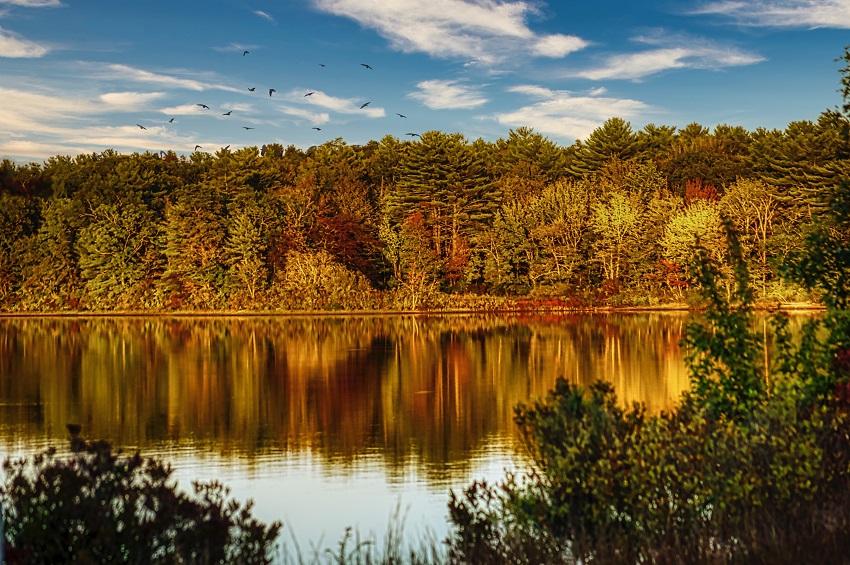
Because you don’t need a license or to register your kayak in Massachusetts, you’re legally allowed to paddle pretty much anywhere. As long as there is parking and access to the water (not through private property), you are legally allowed to kayak on virtually every river, reservoir, bay, and harbor around the state.
That being said, be aware that you might share the waterways with motorboats and larger ships, especially in places like Cape Cod or Boston Harbor.
According to the Massachusetts Environmental Police:
All SUP users on coastalwaters, when not in a bathing, swimming, or surf zone, are required by law to have a Type I, II, or III personal floatation device (PFD) aboard.
All SUP users on inland lakes or rivers, when not in a bathing or swimming area, are required by law to have a Type I, II, or III personal floatation device (PFD) aboard.
So, yes, whenever you’re out on your paddleboard, you need to have PFD at least on board with you, even if you’re not wearing it.
Absolutely! Cape Cod Bay is home to some of the most beautiful kayaking locations—from gorgeous beaches to calm creeks to state parks to marshes to rivers to bays to, of course, the ocean itself. There are many places where motorized boats and ships will be sailing, too, so stay aware and steer clear.
You are legally allowed to drink on board a boat in Massachusetts, but if you become intoxicated, you will be given a BUI.
According to one city’s website, “By operating a vessel on Massachusetts’ waters, you have given “implied” consent to alcohol testing if arrested for boating under the influence. Anyone who refuses to submit to a blood alcohol level test is subject to having their motor vehicle license and vessel’s registration revoked for 180 days.”
You may be operating a manually-powered vessel, but if the police suspect you of boating under the influence (kayaking while intoxicated) they can subject you to alcohol testing and you will still receive the same penalties as if you were operating a motorized vessel.



